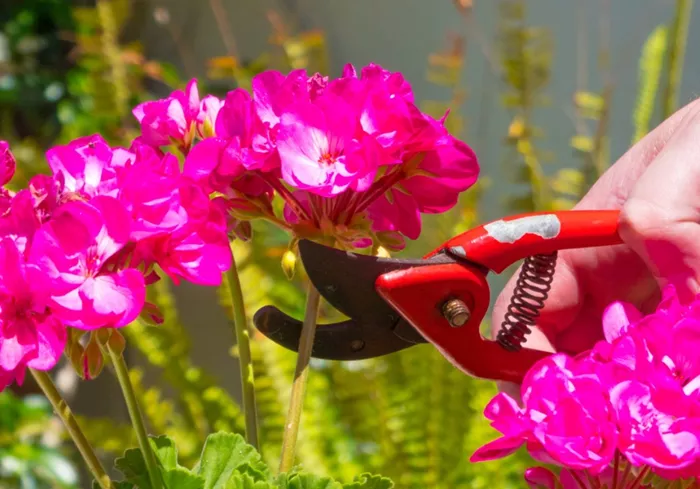Geraniums are beloved for their vibrant colors and long blooming season, making them a favorite in many gardens. However, to maintain their health and encourage future growth, regular pruning is essential. In this article, we will explore the best times to cut back geraniums, when to trim, and how to do it properly for optimal results.
Understanding Geraniums: Why Pruning Matters
Before diving into the specific months for cutting back geraniums, it’s important to understand the plant’s growth cycle and how pruning benefits them. Geraniums are perennials in many climates, though they are often grown as annuals. Cutting them back properly encourages stronger growth, more flowers, and healthier plants.
When to Prune Geraniums: A Seasonal Overview
Geranium pruning depends largely on the growing season and local climate. Generally, pruning is needed at the end of the blooming season to prepare the plant for rest and new growth in the following year.
Best Months to Cut Back Geraniums
Geraniums are usually pruned during two primary periods: in late fall after the growing season ends and in early spring to promote new growth. The timing of these cuts will depend on the climate and whether the plants are being grown as perennials or annuals.
Late Fall: Pruning After Flowering
The ideal time for cutting back geraniums in most temperate climates is in late fall, after the flowering season has ended and before the first frost. This timing gives the plant a chance to rest before the next growth cycle.
Early Spring: Preparing for New Growth
In areas where geraniums are grown as perennials, an additional pruning in early spring can help rejuvenate the plant. This is especially useful if the geraniums have overwintered and are ready to start a new growing season.
How to Prune Geraniums Effectively
Knowing when to prune is important, but doing it correctly is just as crucial for ensuring a healthy geranium plant. Below, we’ll go over the key steps for cutting back geraniums and the tools you’ll need to get the job done.
Essential Tools for Pruning Geraniums
Using the right tools is essential for pruning geraniums correctly. A pair of sharp, clean pruning shears or garden scissors will work best. Always make sure the blades are clean to prevent the spread of disease.
Step-by-Step Guide to Pruning Geraniums
Follow these steps to properly prune your geraniums:
- Cut Back Dead or Damaged Stems: Remove any dead or diseased stems before pruning the healthy parts of the plant.
- Trim Leggy Growth: Trim any leggy or spindly growth to help encourage bushier growth and more flowers.
- Shape the Plant: Trim the outer edges to shape the plant. This will encourage a more compact, full growth habit.
- Remove Old Flowers: Cut off any spent flowers to encourage new blooms in the upcoming season.
Post-Pruning Care for Geraniums
Once your geraniums have been pruned, proper care afterward is crucial to ensure they thrive. Adequate watering, the right amount of sunlight, and occasional feeding will help the plant recover quickly and prepare for the next growing season.
Watering and Fertilizing After Pruning
Once the geraniums are cut back, they will need sufficient water to recover. Make sure the soil is well-draining and water the plant thoroughly, ensuring the roots are well hydrated. A light fertilizing session with a balanced fertilizer will also encourage healthy regrowth.
Sunlight and Temperature Considerations
Geraniums need plenty of sunlight to thrive. After pruning, place them in a location that receives full to partial sunlight for at least 6 hours a day. Temperature is also important—avoid placing them in areas where there are temperature fluctuations that may stress the plant.
Common Pruning Mistakes to Avoid
While pruning is beneficial, there are some common mistakes gardeners make that can harm their geraniums. Here are a few things to keep in mind:
Cutting Too Much at Once
It’s tempting to remove a lot of growth at once, but cutting too much can stress the plant. Always leave enough foliage for the plant to continue its growth process.
Pruning at the Wrong Time
Pruning at the wrong time, especially in the middle of the growing season, can cause the plant to go into shock and disrupt its blooming cycle.
Neglecting Regular Maintenance
Pruning once a year is not enough. Regular deadheading and light pruning throughout the season will ensure your geraniums remain healthy and vibrant.
Conclusion
Pruning geraniums at the right time and in the right way is essential for maintaining their health and encouraging robust growth. By following the advice above, gardeners can enjoy vibrant geraniums year after year. Whether you’re preparing your plants for winter dormancy or encouraging spring growth, timely and thoughtful pruning is key.


